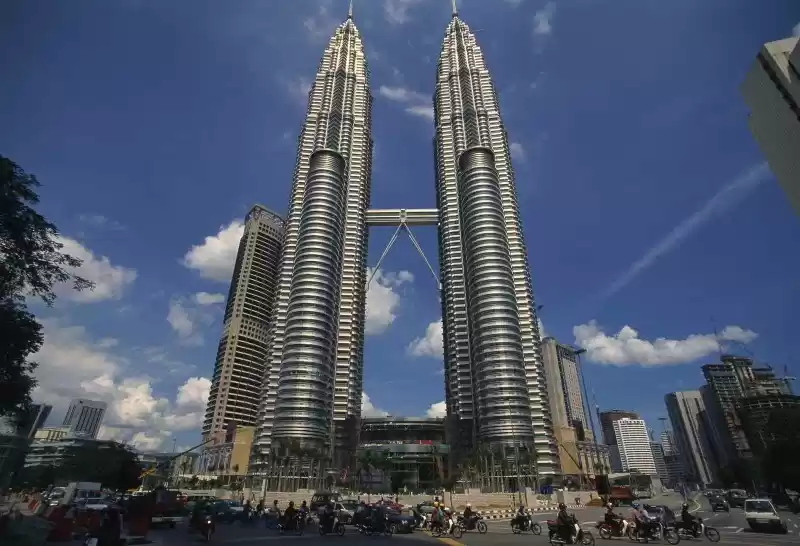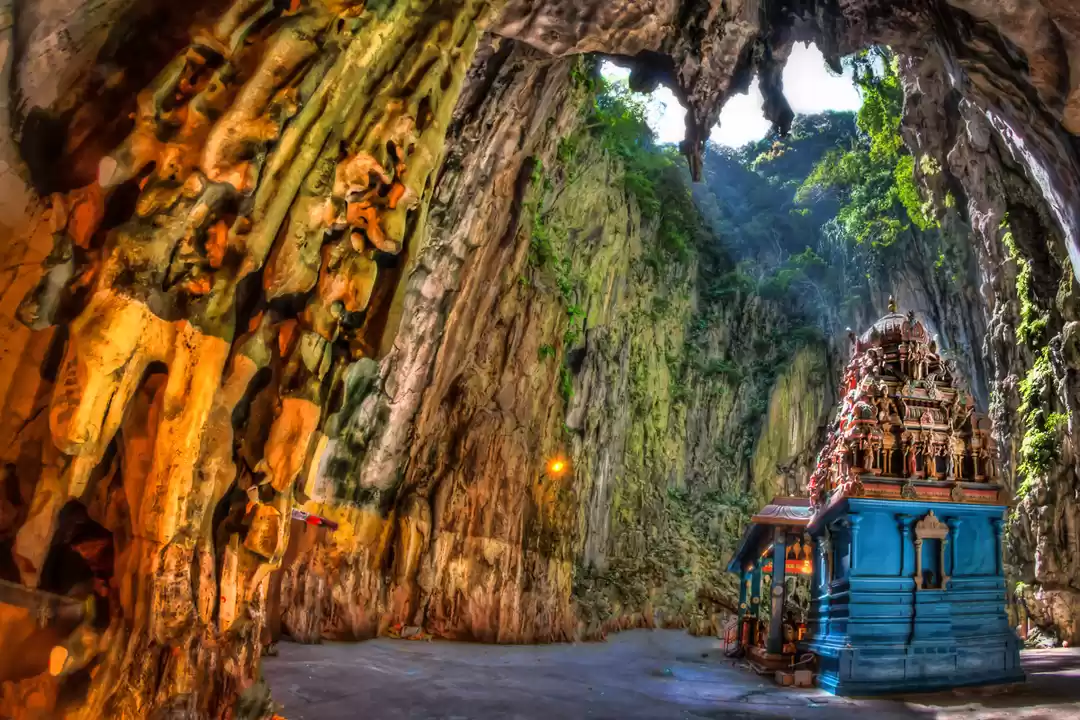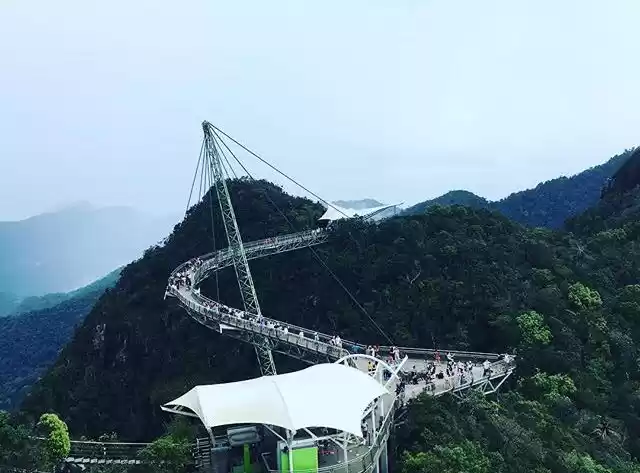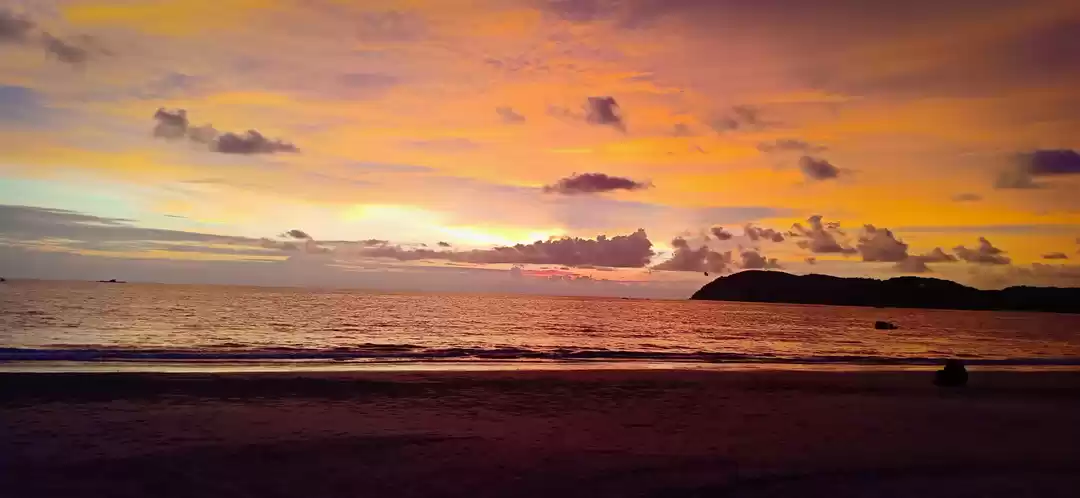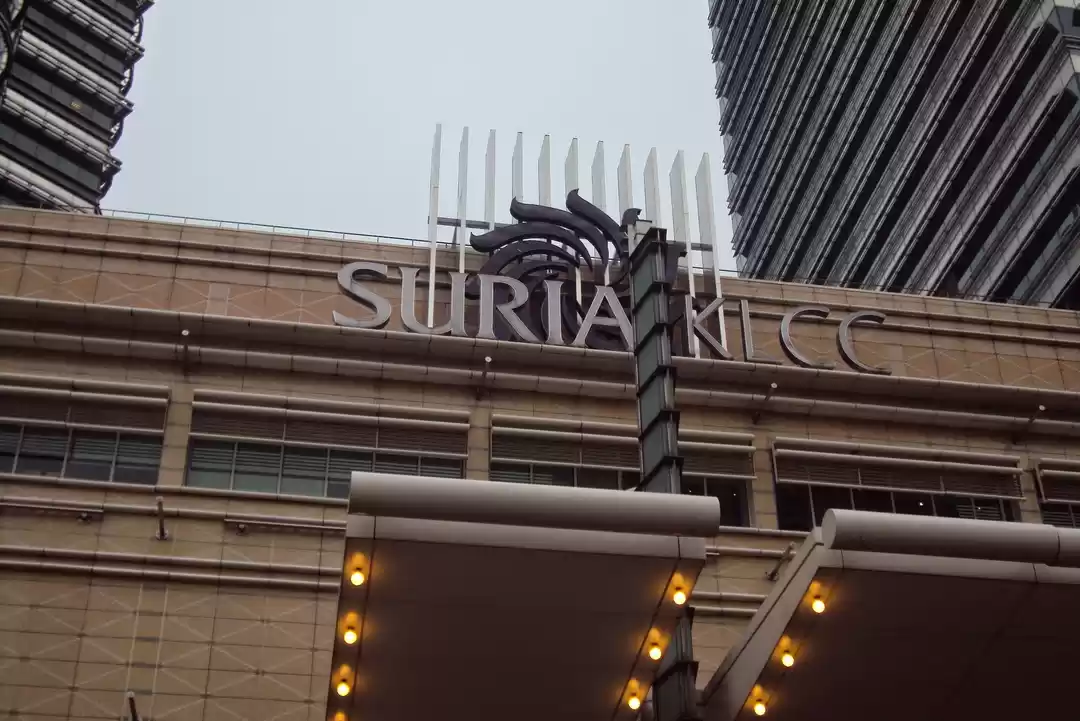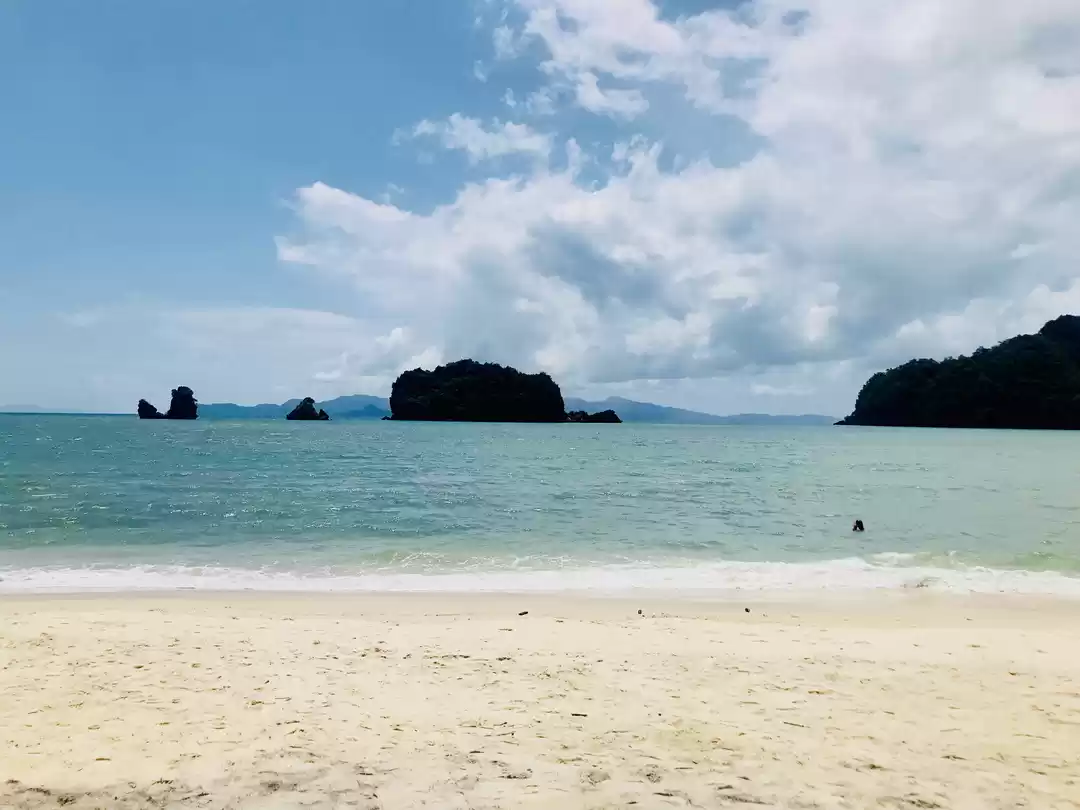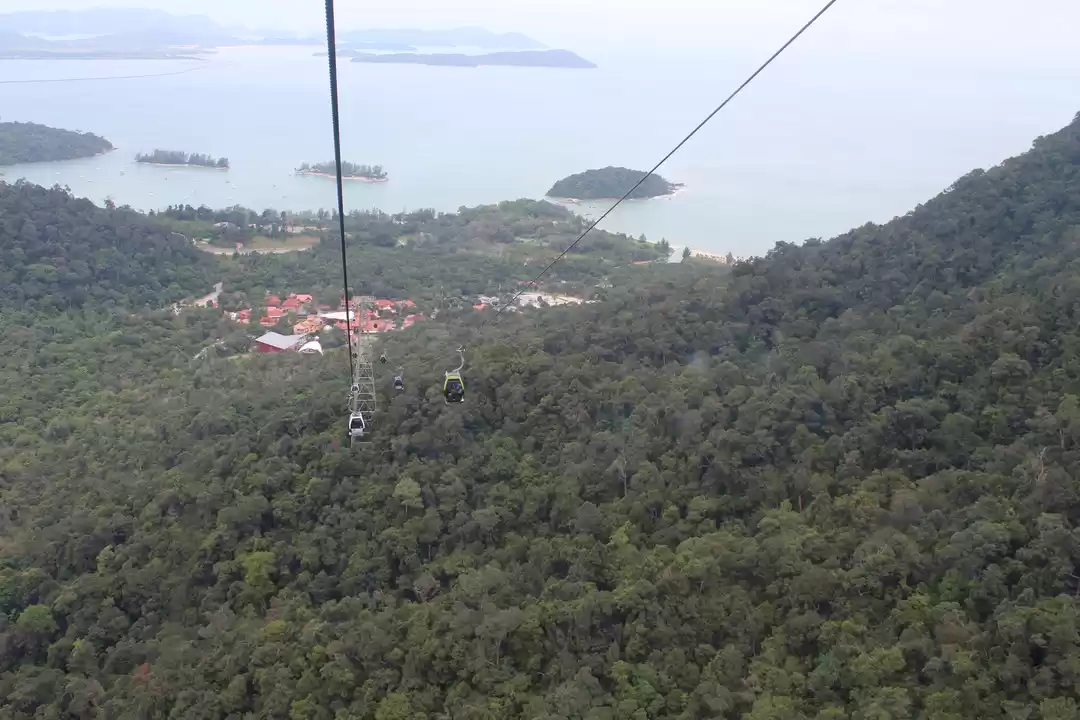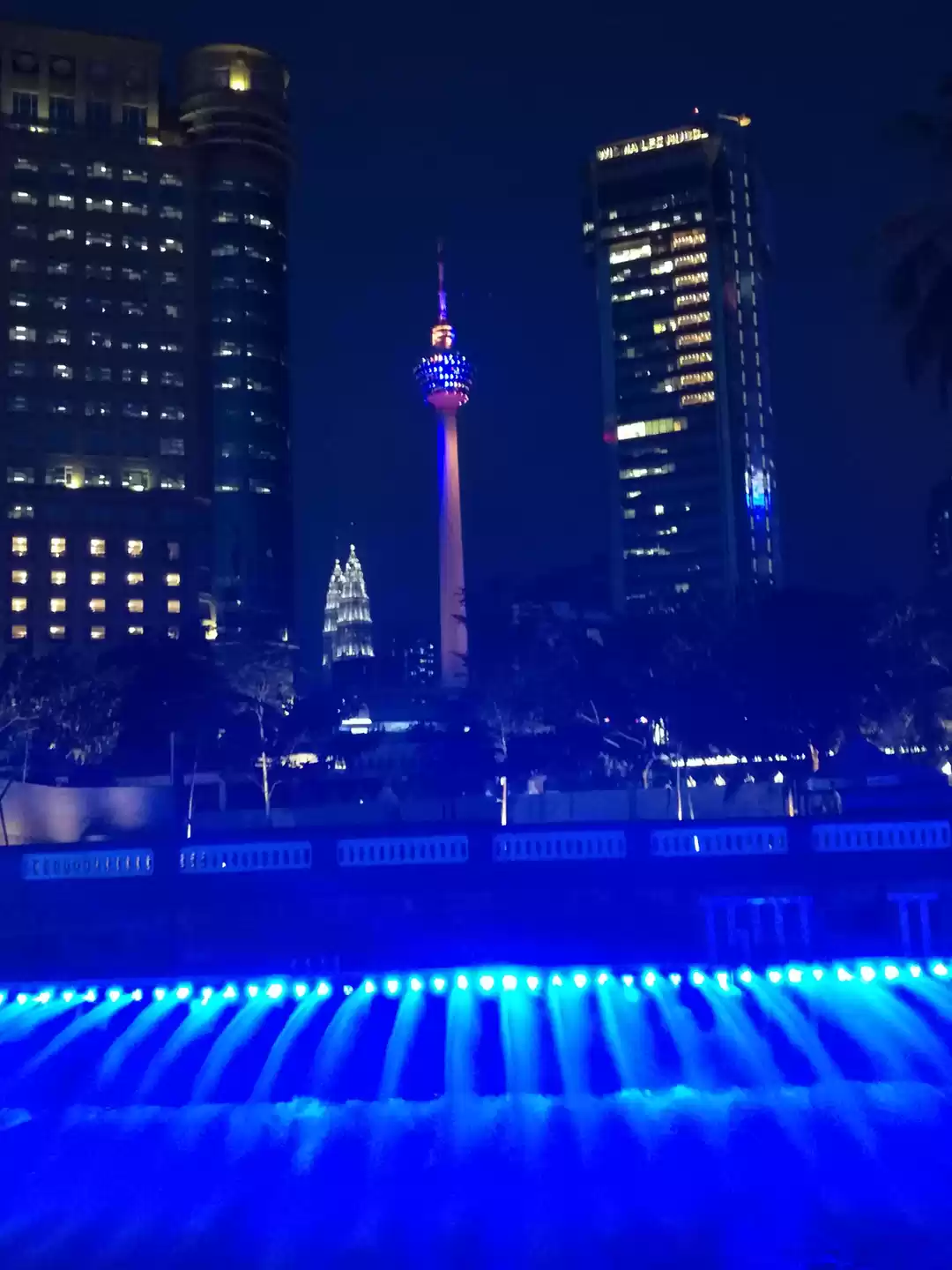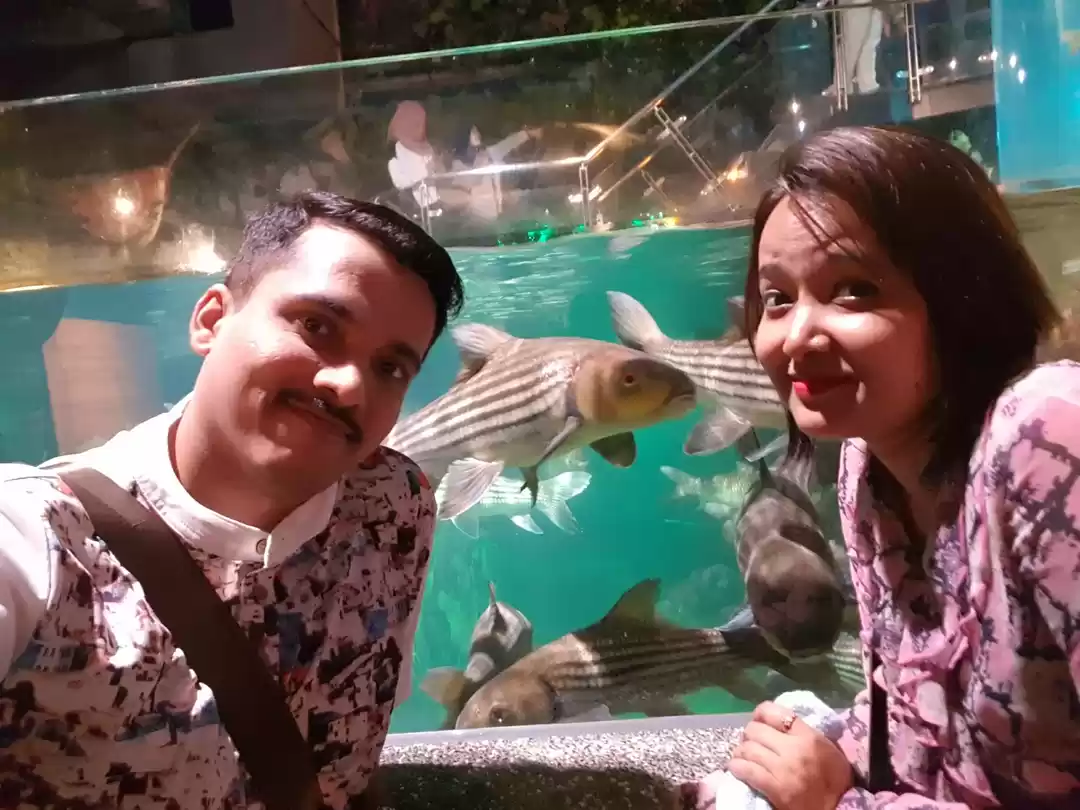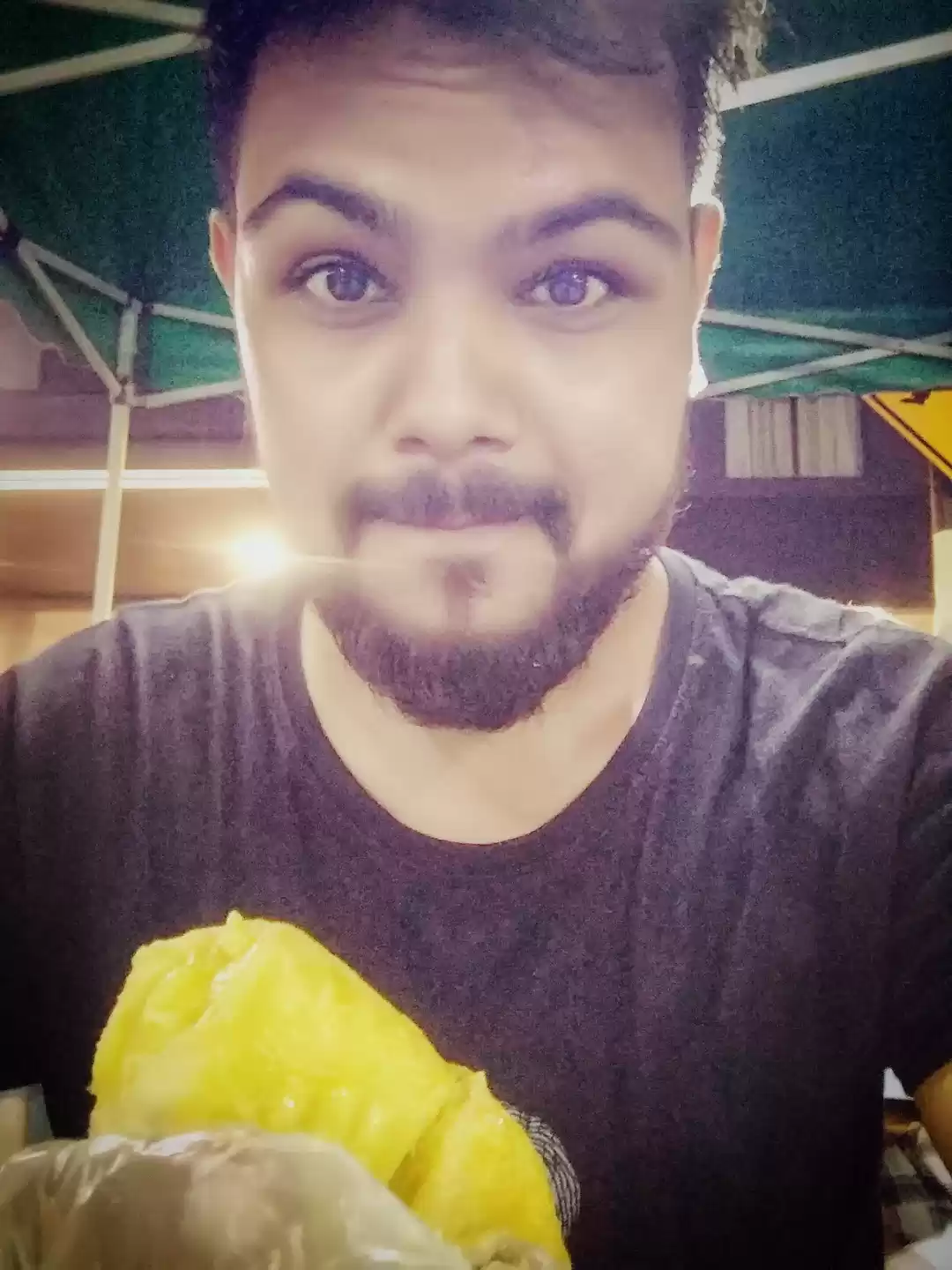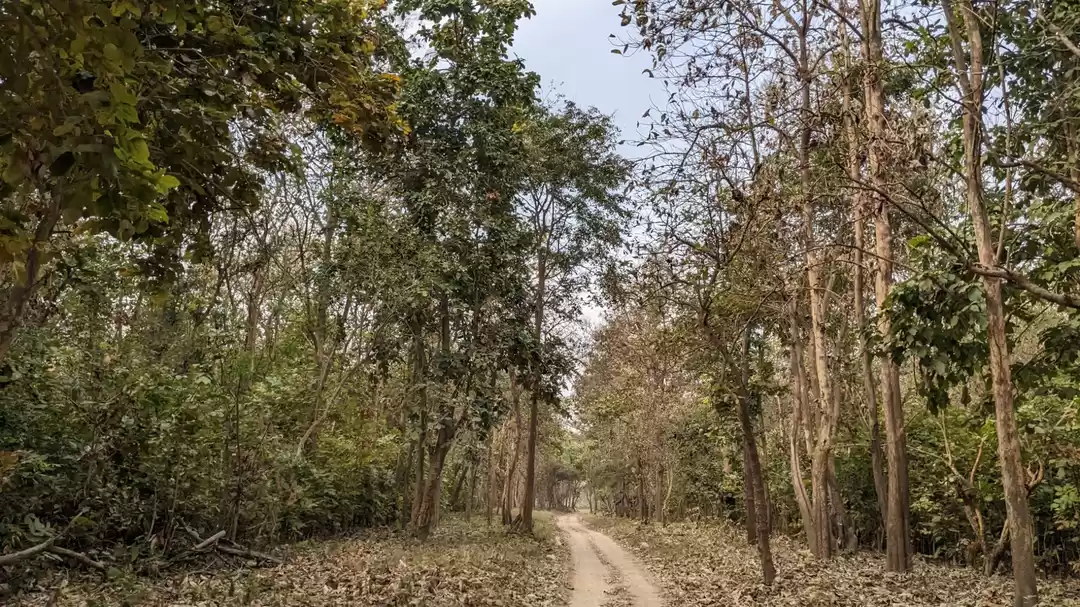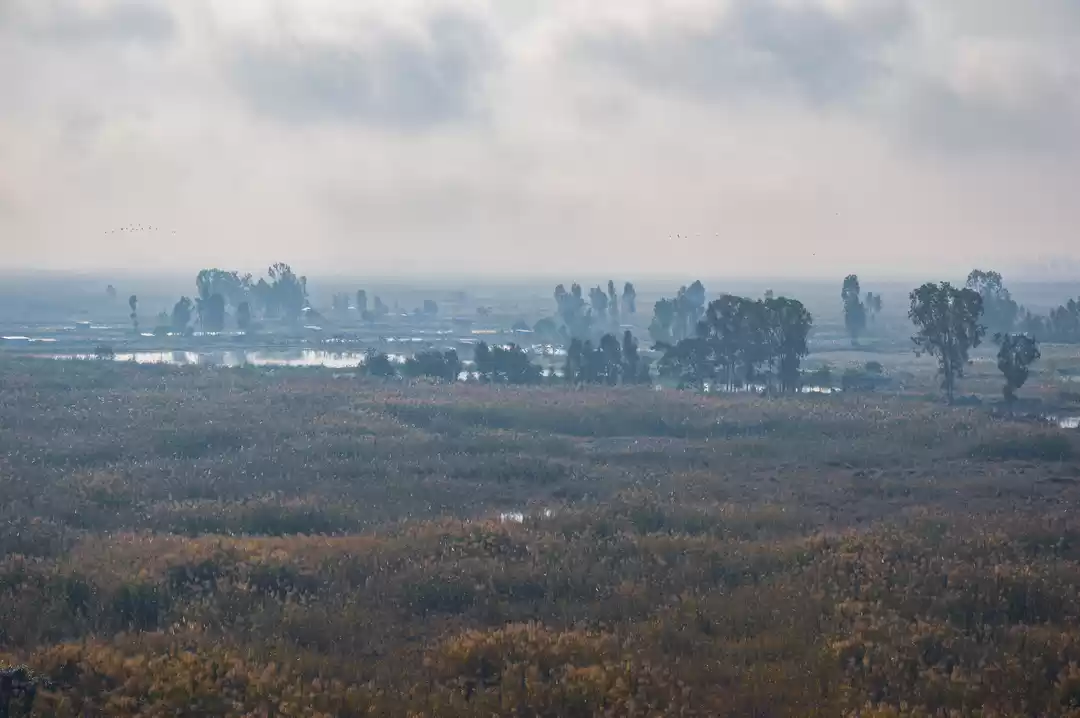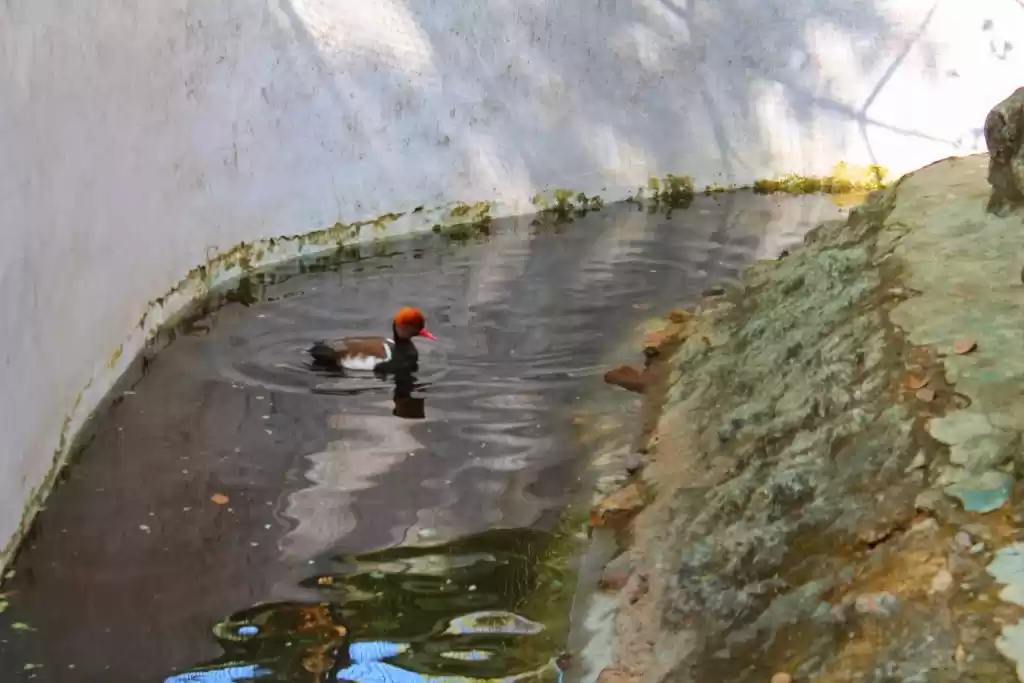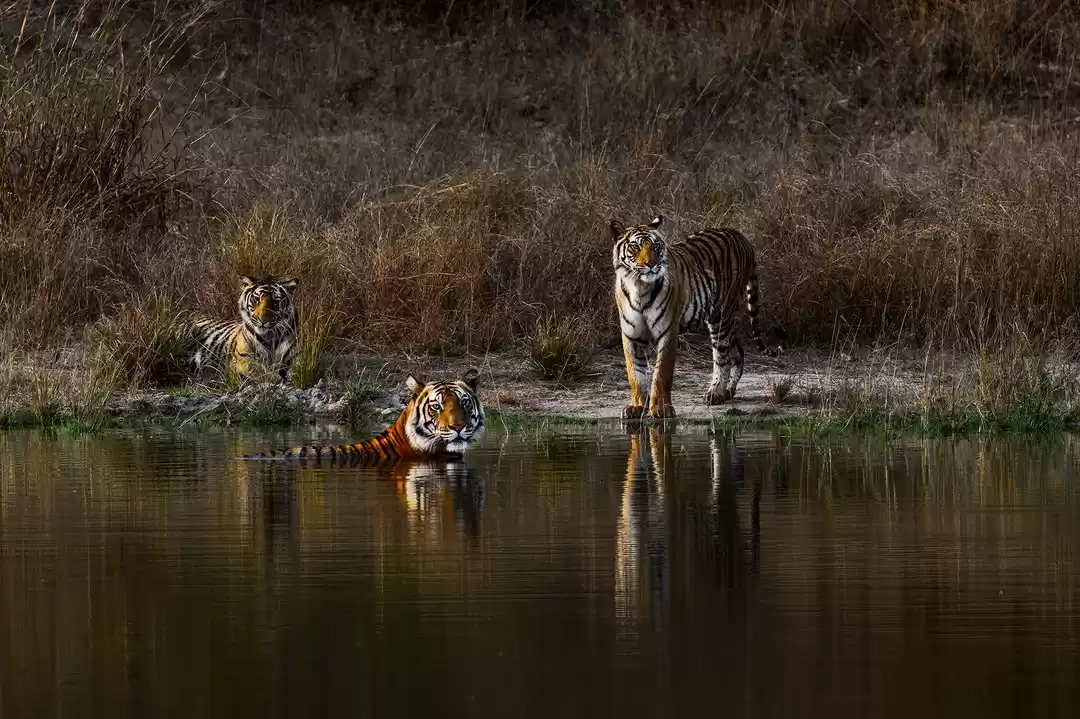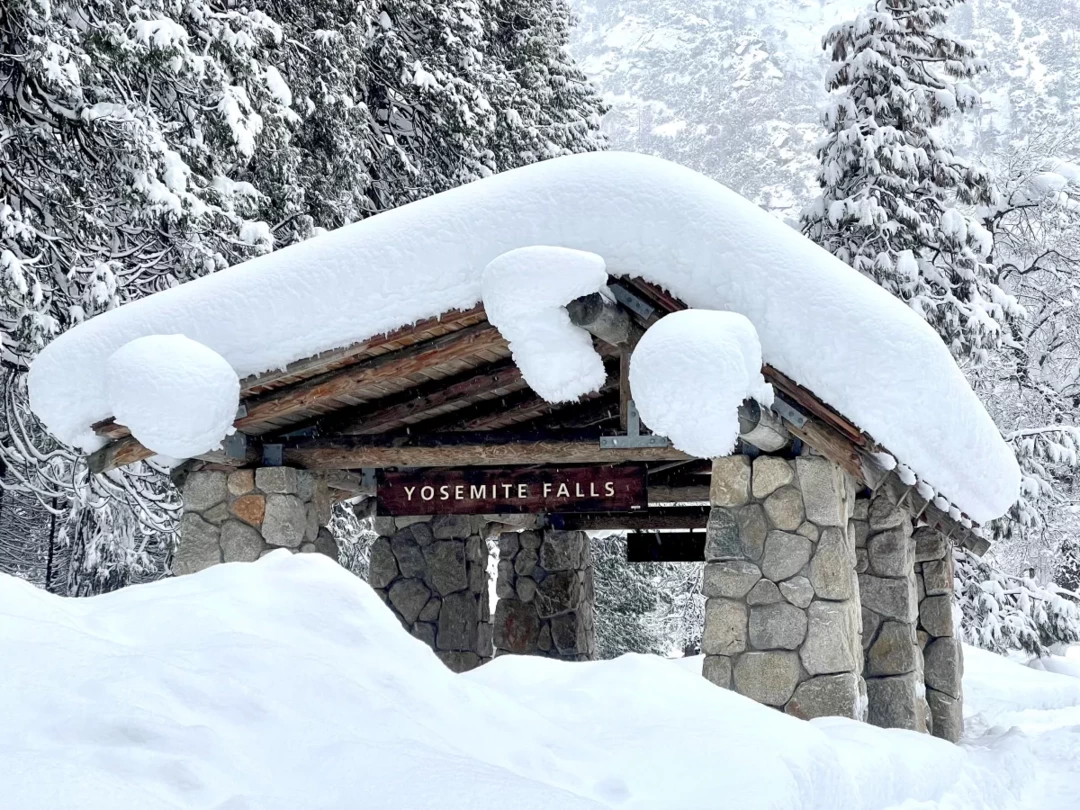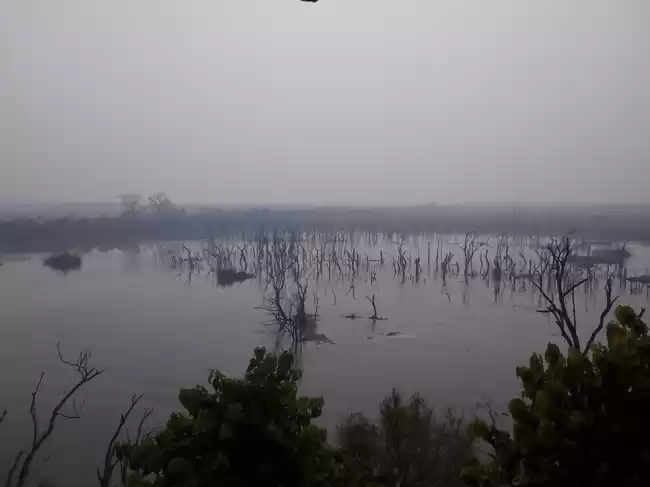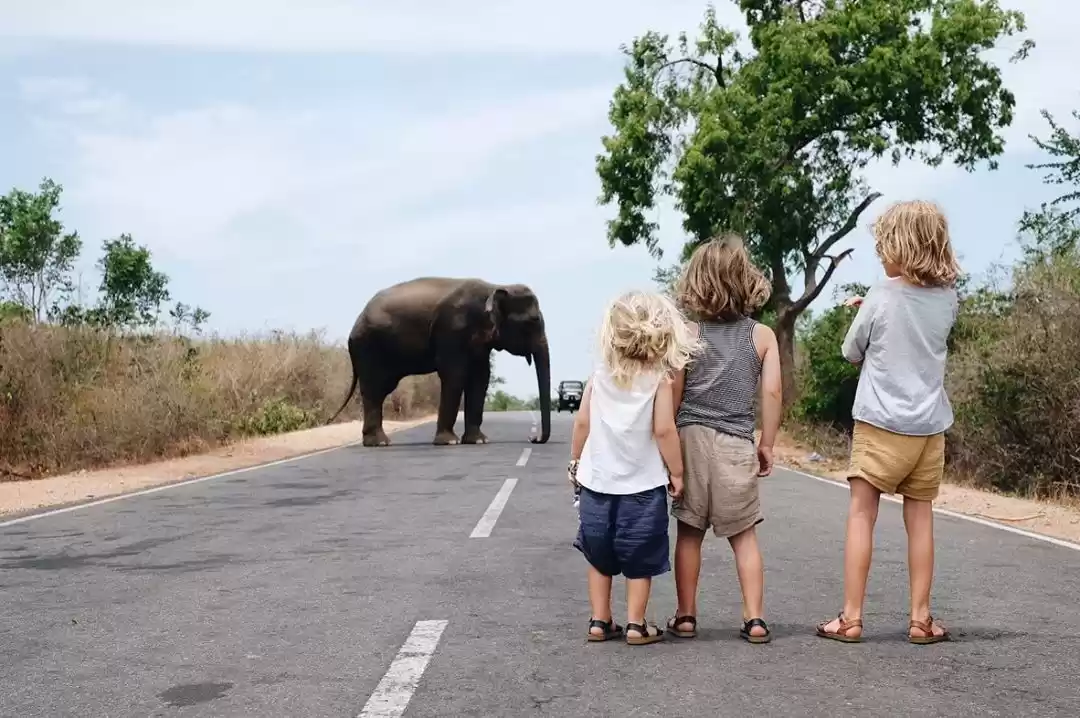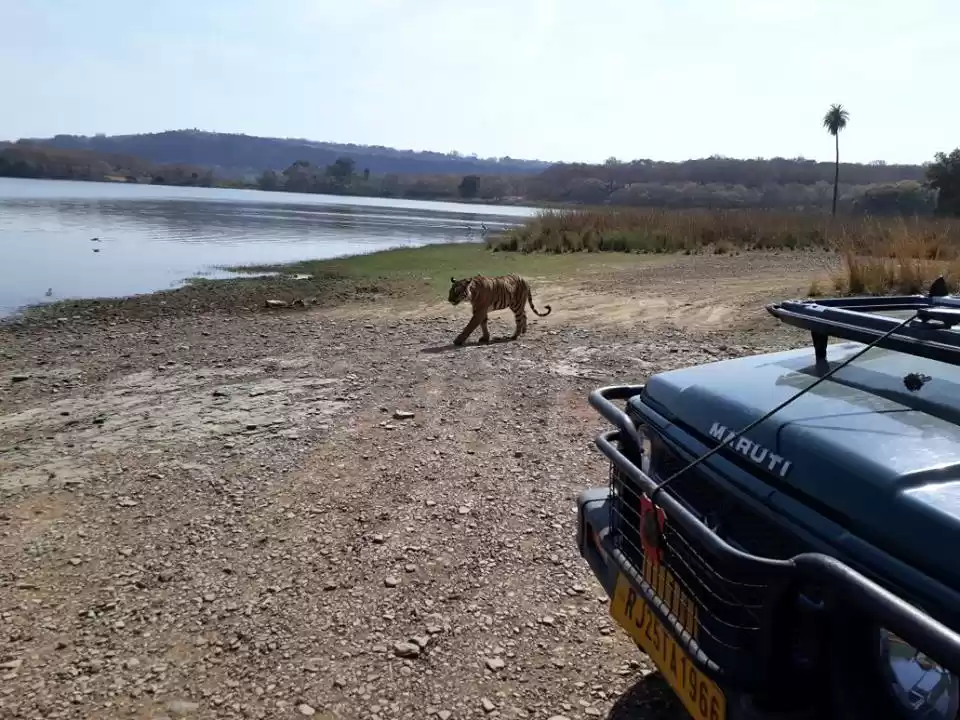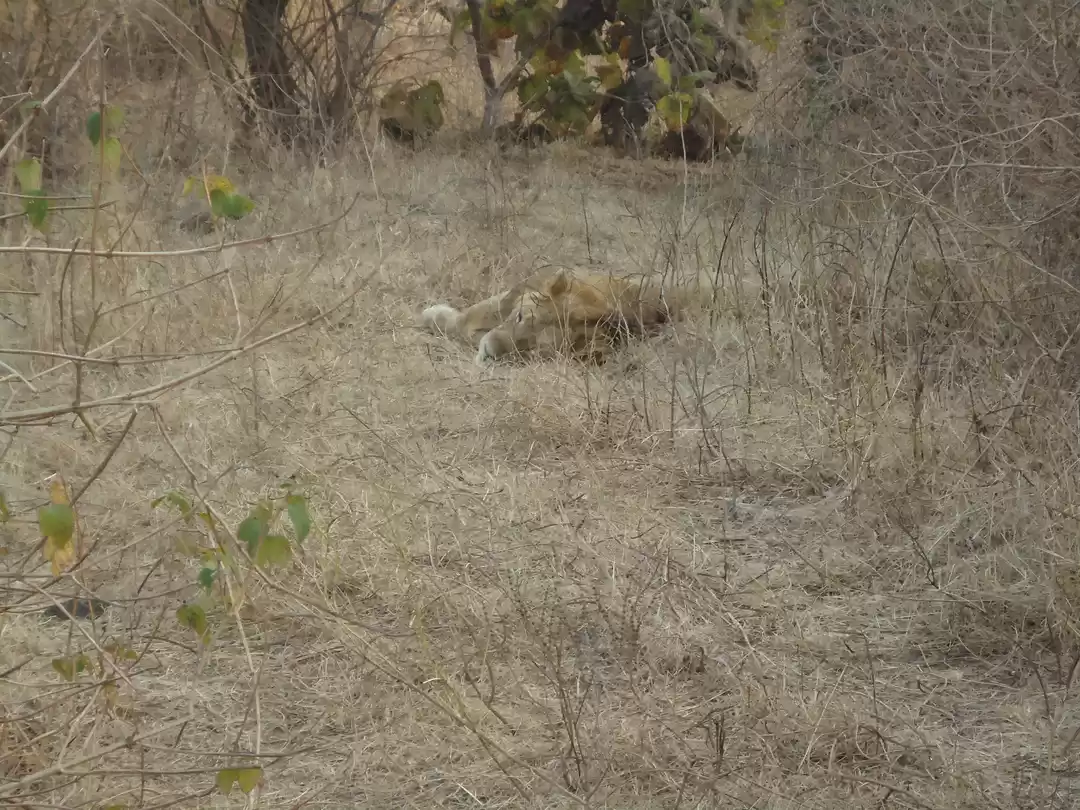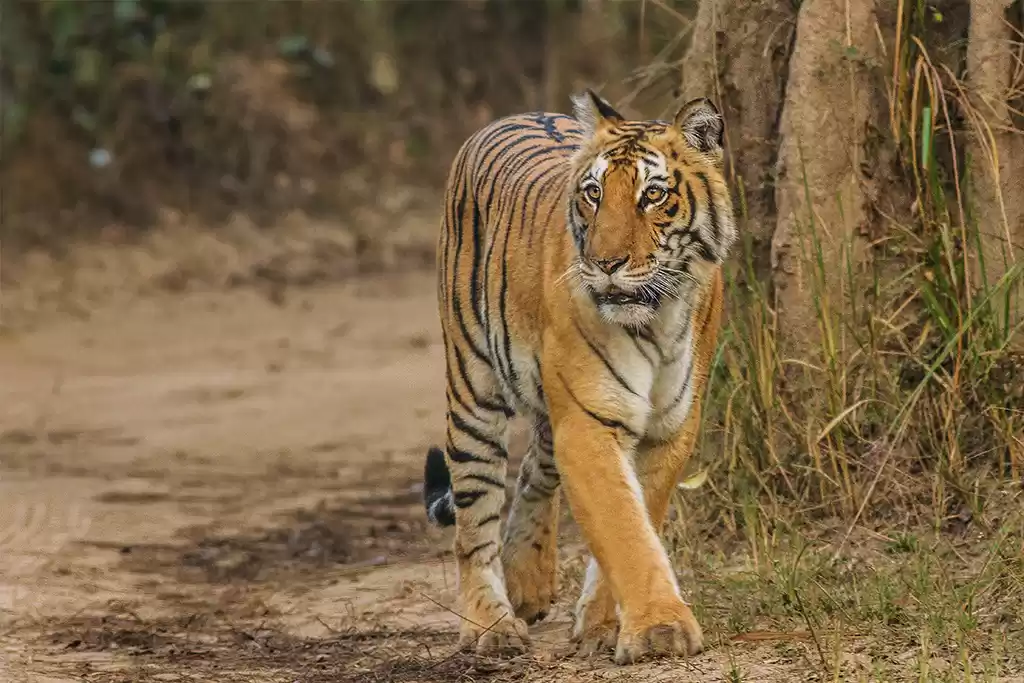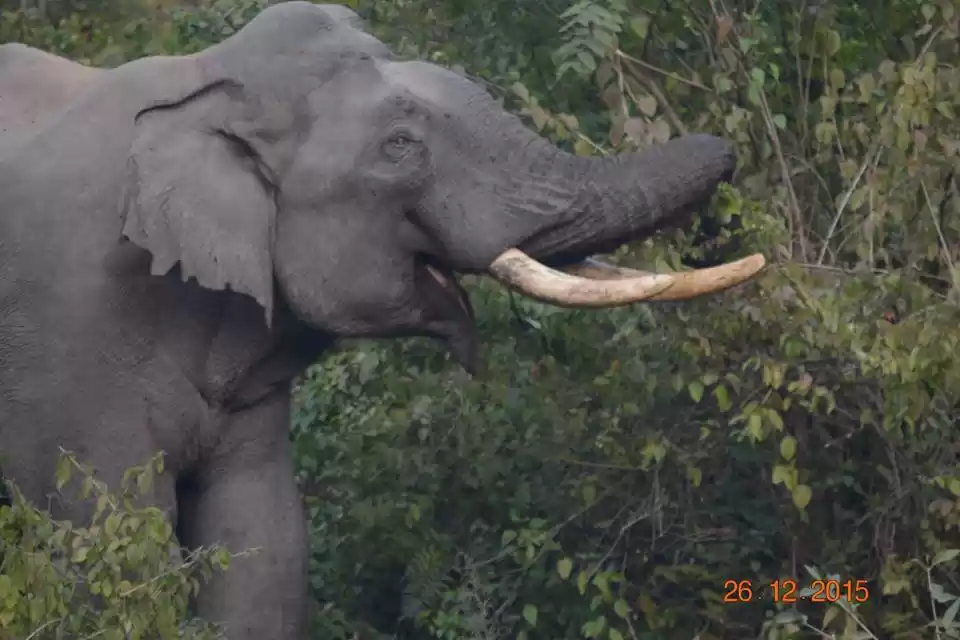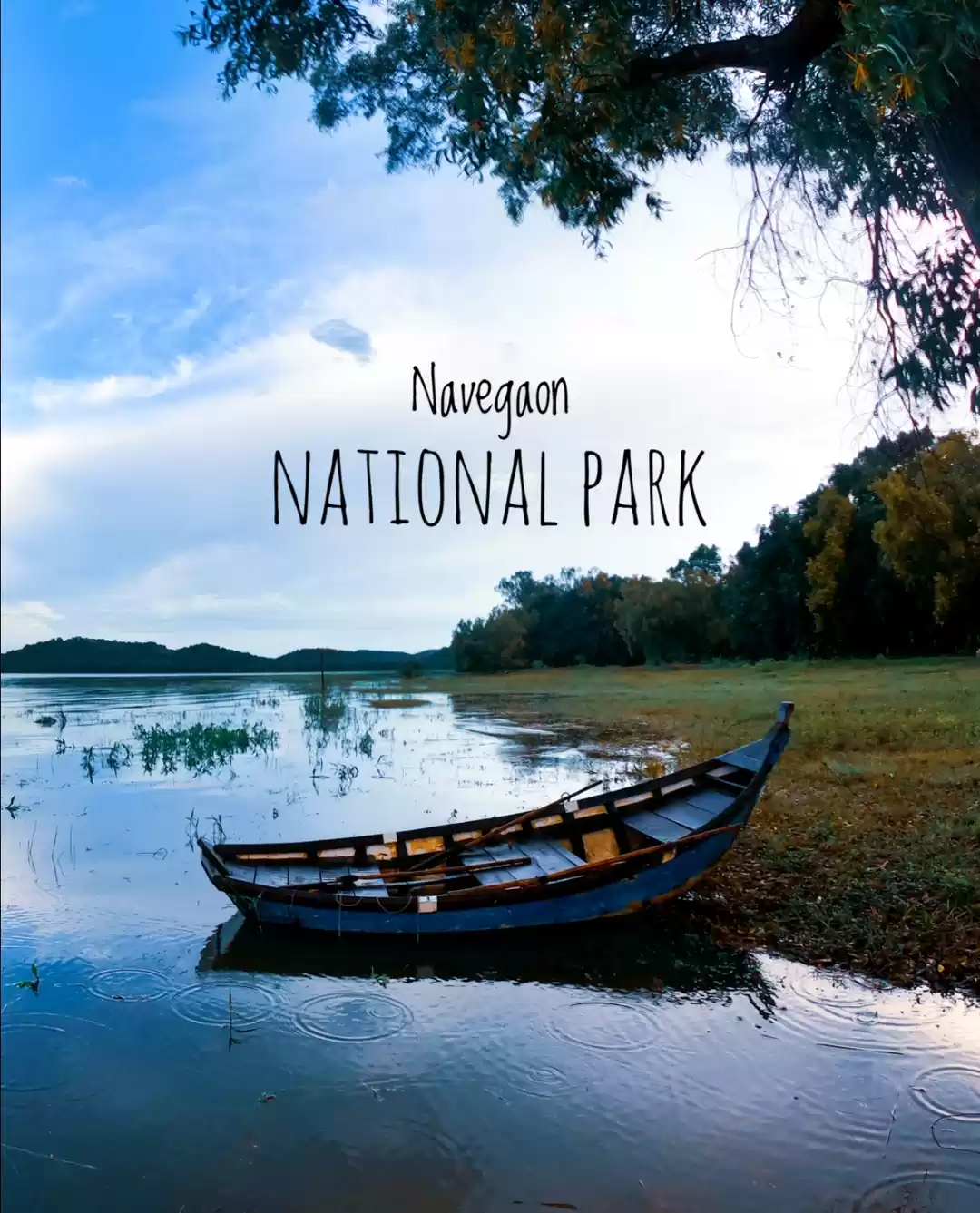Are you looking for an adventure of a lifetime? Do you want to explore one of the most diverse and stunning natural wonders on the planet? If yes, then you should visit Gunung Mulu National Park in Malaysia, a UNESCO World Heritage Site that boasts the world’s largest cave system, the world’s oldest rainforest, and the world’s most amazing rock formations.
In this guide, you will find everything you need to know about visiting Gunung Mulu National Park, including how to get there, where to stay, what to see and do, what to pack and prepare, how much it costs, and when to visit. Whether you are a nature lover, a thrill seeker, or a culture enthusiast, you will find something to suit your taste and interest in this incredible park.
Read on to discover the secrets and wonders of Gunung Mulu National Park, and get ready to embark on an unforgettable journey.
How to Get to Gunung Mulu National Park
Gunung Mulu National Park is located in the state of Sarawak in Borneo, the third largest island in the world. The park is remote and isolated, which adds to its charm and mystery, but also makes it challenging to reach.
There are three main ways to get to Gunung Mulu National Park: by plane, by boat, or by road. Each option has its own advantages and disadvantages, depending on your budget, time, availability, and experience.
By Plane
The easiest and fastest way to get to Gunung Mulu National Park is by plane. There is a small airport in the park, called Mulu Airport, that operates daily flights from Miri, Kuching, and Kota Kinabalu. These are the major cities in Borneo, and you can fly to them from Kuala Lumpur, Singapore, or other international destinations.
The flight time from Miri to Mulu is about 30 minutes, from Kuching to Mulu is about 1 hour and 15 minutes, and from Kota Kinabalu to Mulu is about 1 hour and 30 minutes. The flights are operated by MASwings, a subsidiary of Malaysia Airlines, and you can book them online or through a travel agent.
The cost of the flights varies depending on the season, the demand, and the availability, but you can expect to pay around RM 200 to RM 400 (USD 50 to USD 100) for a one-way ticket. The flights are often fully booked, especially during the peak season, so make sure to book in advance and check the schedule and availability regularly.
The advantage of flying to Gunung Mulu National Park is that it is convenient, quick, and comfortable. You can save time and energy, and enjoy the scenic views of the rainforest and the mountains from the air. The disadvantage of flying to Gunung Mulu National Park is that it is expensive, limited, and dependent on the weather. You may have to pay a premium price, deal with flight delays or cancellations, and miss out on the adventure and the experience of traveling by land or water.
By Boat
The second option to get to Gunung Mulu National Park is by boat. You can take a boat from Marudi, a town in Sarawak, to Kuala Apoh or Long Terawan, two villages near the park. From there, you can take another boat to Kuala Berar, the jetty of the park.
To get to Marudi, you can either fly from Miri, which takes about 20 minutes and costs around RM 100 (USD 25), or take a bus from Miri, which takes about 3 hours and costs around RM 20 (USD 5). The bus departs from Pujut Corner Bus Terminal in Miri, and you can buy the tickets on the spot.
The boat from Marudi to Kuala Apoh or Long Terawan takes about 6 hours and costs around RM 150 (USD 37.5). The boat departs from Marudi Jetty, and you can buy the tickets on the spot or through a travel agent. The boat from Kuala Apoh or Long Terawan to Kuala Berar takes about 1 hour and costs around RM 25 (USD 6.25). The boat departs from the village jetty, and you can buy the tickets from the boat operator.
The advantage of taking a boat to Gunung Mulu National Park is that it is adventurous, authentic, and immersive. You can experience the local culture, see the wildlife, and enjoy the river scenery along the way. The disadvantage of taking a boat to Gunung Mulu National Park is that it is long, tiring, and unpredictable. You may have to endure the heat, the noise, the crowds, and the delays or breakdowns of the boat.
By Road
The third option to get to Gunung Mulu National Park is by road. You can drive or hire a car from Miri to Long Bedian, a town in Sarawak, and then take a 4WD to Long Terawan. From there, you can take a boat to Kuala Berar, as mentioned above.
The drive from Miri to Long Bedian takes about 5 hours and costs around RM 300 (USD 75) for a car rental or RM 50 (USD 12.5) for a shared taxi. The drive is mostly on paved roads, except for the last 30 km, which are on gravel roads. The 4WD from Long Bedian to Long Terawan takes about 2 hours and costs around RM 100 (USD 25) per person. The 4WD is usually arranged by the accommodation or the tour operator in Long Terawan.
The advantage of driving to Gunung Mulu National Park is that it is flexible, independent, and scenic. You can choose your own pace, stop along the way, and see the countryside and the villages. The disadvantage of driving to Gunung Mulu National Park is that it is expensive, time-consuming, and risky. You may have to pay for the fuel, the tolls, the parking, and the maintenance of the car, spend a lot of time on the road, and face the traffic, the road conditions, and the accidents.
Where to Stay in Gunung Mulu National Park
Gunung Mulu National Park offers a range of accommodation options to suit different budgets, preferences, and needs. You can choose to stay inside or outside the park, depending on your convenience, comfort, and experience.
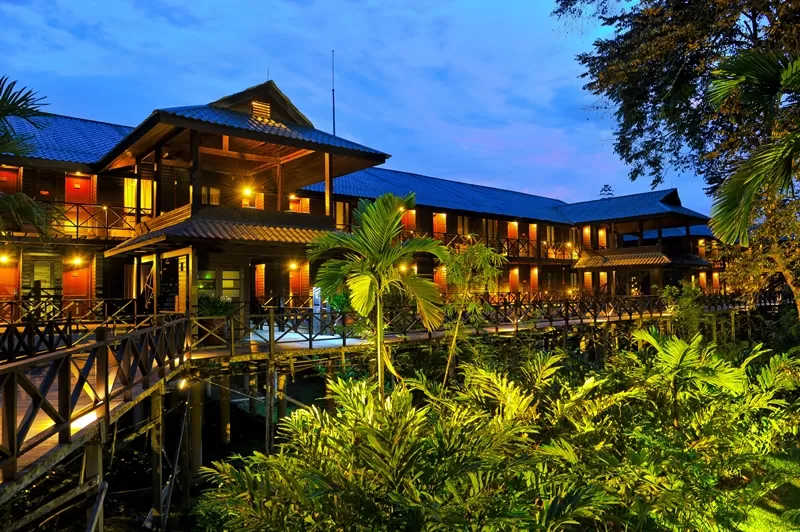
Inside the Park
The main accommodation option inside the park is the Mulu Marriott Resort & Spa, a 5-star luxury resort that is located near the park headquarters and the airport. The resort features spacious and elegant rooms and suites, with modern amenities and facilities, such as air-conditioning, Wi-Fi, TV, minibar, coffee maker, safe, hairdryer, and iron. The resort also offers a restaurant, a bar, a lounge, a spa, a fitness center, a pool, a business center, and a gift shop.
The resort is ideal for those who want to enjoy the comfort, convenience, and service of a high-end hotel, while being close to the park’s attractions and activities. The resort also provides free shuttle service to and from the airport and the park headquarters, as well as guided tours and packages to the park’s highlights.
The cost of staying at the Mulu Marriott Resort & Spa ranges from RM 600 to RM 1200 (USD 150 to USD 300) per night, depending on the season, the demand, and the room type. The price includes breakfast, taxes, and fees. You can book the resort online or through a travel agent.
Another accommodation option inside the park is the Park Accommodation, which is managed by the park authorities and is located at the park headquarters. The park accommodation offers various types of rooms and dormitories, with basic amenities and facilities, such as fan, mosquito net, shared bathroom, and communal kitchen. The park accommodation also offers a cafeteria, a mini market, a laundry service, and a luggage storage.
The park accommodation is ideal for those who want to stay close to nature, meet other travelers, and save money. The park accommodation also gives you easy access to the park’s attractions and activities, as well as the information and the guides.
The cost of staying at the park accommodation ranges from RM 15 to RM 150 (USD 4 to USD 37.5) per night, depending on the season, the demand, and the room type. The price does not include breakfast, taxes, and fees. You can book the park accommodation online or at the park headquarters.
Outside the Park
If you prefer to stay outside the park, you can choose from several options in the nearby villages, such as Kuala Berar, Kuala Apoh, and Long Terawan. These options include homestays, lodges, and campsites, which offer a more authentic and rustic experience of the local culture and the natural environment.
Some of the popular options outside the park are:
Mulu Village Homestay:
A homestay that is located in Kuala Berar, the jetty of the park. The homestay offers simple and clean rooms and dormitories, with fan, mosquito net, shared bathroom, and free Wi-Fi. The homestay also offers a restaurant, a garden, a terrace, and a tour desk. The homestay is ideal for those who want to experience the hospitality and the lifestyle of the local people, while being close to the park’s entrance and the boat service. The cost of staying at the Mulu Village Homestay ranges from RM 30 to RM 60 (USD 7.5 to USD 15) per night, depending on the season, the demand, and the room type. The price includes breakfast, taxes, and fees. You can book the homestay online or through a travel agent.
Mulu River Lodge:
A lodge that is located in Kuala Apoh, a village near the park. The lodge offers comfortable and cozy rooms and chalets, with air-conditioning, private bathroom, hot shower, and free Wi-Fi. The lodge also offers a restaurant, a bar, a lounge, a library, and a tour desk. The lodge is ideal for those who want to enjoy the tranquility and the beauty of the river and the forest, while having access to the park’s attractions and activities. The cost of staying at the Mulu River Lodge ranges from RM 100 to RM 200 (USD 25 to USD 50) per night, depending on the season, the demand, and the room type. The price includes breakfast, taxes, and fees. You can book the lodge online or through a travel agent.
Camp 5:
A campsite that is located in the heart of the park, near the base of the pinnacles. The campsite offers basic and shared facilities, such as tents, sleeping mats, blankets, toilets, showers, and cooking utensils. The campsite also offers a canteen, a souvenir shop, and a ranger station. The campsite is ideal for those who want to experience the adventure and the challenge of trekking and climbing in the park, while being surrounded by the stunning scenery and the wildlife. The cost of staying at Camp 5 is RM 15 (USD 4) per night, per person. The price does not include breakfast, taxes, and fees. You can book the campsite at the park headquarters or through a tour operator.
What to See and Do in Gunung Mulu National Park
Gunung Mulu National Park is a paradise for nature lovers and adventure seekers, as it offers a variety of attractions and activities to see and do. Whether you want to marvel at the magnificent caves, observe the fascinating wildlife, walk on the canopy, or climb the pinnacles, you will find something to suit your taste and interest in this incredible park.
Here are some of the main attractions and activities in Gunung Mulu National Park, and why they are worth visiting and doing.

The Caves
The caves are the main attraction and the highlight of Gunung Mulu National Park, as they are the largest, the most diverse, and the most spectacular in the world. The park has over 300 km of explored caves, and many more that are still undiscovered. The caves are divided into two categories: the show caves and the adventure caves.
The show caves are the caves that are open to the public, and that can be visited with a guide and without any special equipment or skills. The show caves are:
Deer Cave: The world’s largest cave passage, measuring 2 km long, 174 m wide, and 122 m high. The cave is famous for its huge entrance, its impressive formations, and its millions of bats that fly out of the cave every evening at dusk, creating a spectacular sight.
Lang Cave: The smallest and the most decorated cave in the park, with stunning stalactites, stalagmites, helictites, and other formations. The cave is also home to various cave-dwelling animals, such as swiftlets, bats, spiders, and crabs.
Clearwater Cave: The longest cave in Southeast Asia, measuring over 200 km long. The cave is named after its crystal-clear underground river, which is the source of water for the park and the nearby villages. The cave also features a natural pool, where visitors can swim and relax.
Wind Cave: A cave that is known for its strong breeze, its limestone corridors, and its unique formations, such as the King’s Room, the Moonmilk Chamber, and the Blade Chamber. The cave also has a balcony, where visitors can enjoy the view of the river and the forest.
The adventure caves are the caves that are open to the adventurous and the experienced, and that require special equipment and skills to explore. The adventure caves are:
Lagang Cave: A cave that is considered as the most challenging and the most rewarding in the park, as it involves crawling, climbing, squeezing, and swimming through narrow passages, steep slopes, and deep pools. The cave also offers stunning formations, such as the Crystal Pool, the Gergasi Chamber, and the Sarawak Chamber, which is the world’s largest cave chamber, measuring 700 m long, 400 m wide, and 70 m high.
Racer Cave: A cave that is named after the racer snakes that live in the cave, and that can be seen hanging from the ceiling or the walls. The cave also has other cave-dwelling animals, such as frogs, crickets, and scorpions. The cave is a vertical cave, which means that it requires climbing up and down ropes, ladders, and walls.
Clearwater Connection: A cave that is a combination of Clearwater Cave and Wind Cave, and that connects the two caves through a series of passages, chambers, and streams. The cave is a wet cave, which means that it requires wading, swimming, and floating through water, sometimes in complete darkness. The cave also has some of the most beautiful formations in the park, such as the Pearls Chamber, the Lady’s Cave, and the Shadow Chamber.
To visit the show caves, you need to join a guided tour that departs from the park headquarters. The tours are available daily, and they cost around RM 20 to RM 40 (USD 5 to USD 10) per person, per cave, depending on the cave and the season. The tours include the entrance fee, the guide fee, and the transportation fee. You can book the tours at the park headquarters or through a travel agent.
To visit the adventure caves, you need to join a guided tour that departs from the park headquarters. The tours are available on request, and they cost around RM 100 to RM 300 (USD 25 to USD 75) per person, per cave, depending on the cave and the season. The tours include the entrance fee, the guide fee, the transportation fee, and the equipment rental fee. You can book the tours at the park headquarters or through a travel agent.
The Wildlife
The wildlife is another attraction and a highlight of Gunung Mulu National Park, as it is one of the most diverse and rich in the world. The park has over 3,500 species of plants, over 1,700 species of animals, and over 8,000 species of fungi. The park is also home to many endemic and endangered species, such as the Bornean orangutan, the Bornean pygmy elephant, the Bornean rhinoceros, and the Bornean clouded leopard.
The best way to see and observe the wildlife in the park is to go on a guided walk or a night safari. The guided walks are available daily, and they depart from the park headquarters. The walks take you to different trails and habitats in the park, such as the rainforest, the river, the swamp, and the limestone. The walks cost around RM 10 to RM 20 (USD 2.5 to USD 5) per person, per walk, depending on the walk and the season. The walks include the guide fee and the transportation fee. You can book the walks at the park headquarters or through a travel agent.
The night safaris are available on request, and they depart from the park headquarters. The safaris take you to the same trails and habitats as the walks, but at night, when the park comes alive with different sounds and sights. The safaris cost around RM 30 to RM 50 (USD 7.5 to USD 12.5) per person, per safari, depending on the safari and the season. The safaris include the guide fee, the transportation fee, and the flashlight rental fee. You can book the safaris at the park headquarters or through a travel agent.
Some of the wildlife that you can see and observe in the park are:
Bats: The park has over 30 species of bats, which are the most abundant and the most visible animals in the park. The bats can be seen flying out of the caves every evening, creating a spectacular sight. The bats can also be seen roosting in the caves, where you can learn more about their behavior and ecology.
Birds: The park has over 270 species of birds, which are the most colorful and the most vocal animals in the park. The birds can be seen and heard in the rainforest, where you can spot and identify different species, such as the hornbills, the kingfishers, the trogons, and the pittas.
Insects: The park has over 2,000 species of insects, which are the most diverse and the most intriguing animals in the park. The insects can be seen and admired in the rainforest, where you can discover and learn more about different species, such as the butterflies, the beetles, the stick insects, and the fireflies.
Reptiles and Amphibians: The park has over 80 species of reptiles and amphibians, which are the most ancient and the most adaptable animals in the park. The reptiles and amphibians can be seen and observed in the swamp, the river, and the caves, where you can encounter and identify different species, such as the crocodiles, the snakes, the lizards, and the frogs.
Mammals: The park has over 80 species of mammals, which are the most elusive and the most endangered animals in the park. The mammals can be seen and spotted in the canopy, the limestone, and the forest floor, where you can glimpse and recognize different species, such as the orangutans, the elephants, the rhinoceroses, and the leopards.
The Canopy Walk
The canopy walk is one of the most popular and the most thrilling activities in Gunung Mulu National Park, as it allows you to experience the rainforest from a different perspective and height. The canopy walk is a suspended bridge that spans over 480 m long and 20 m high, and that connects several platforms and towers in the treetops.
The canopy walk is open daily, and it can be visited with a guide and a ticket. The tickets are available at the park headquarters, and they cost RM 15 (USD 4) per person, per walk. The tickets are limited and timed, so make sure to book in advance and check the schedule and availability regularly.
The advantage of doing the canopy walk is that it is fun, exciting, and educational. You can enjoy the views, the breeze, and the adrenaline, while learning more about the flora and fauna of the rainforest. The disadvantage of doing the canopy walk is that it is crowded, noisy, and restricted. You may have to wait in line, share the space, and follow the rules and regulations of the walk.
The Pinnacles
The pinnacles are the most iconic and the most challenging attraction in Gunung Mulu National Park, as they are the world’s most amazing rock formations. The pinnacles are a series of sharp and jagged limestone spikes that rise up to 45 m high, and that are located on the slopes of Gunung Api, one of the mountains in the park.
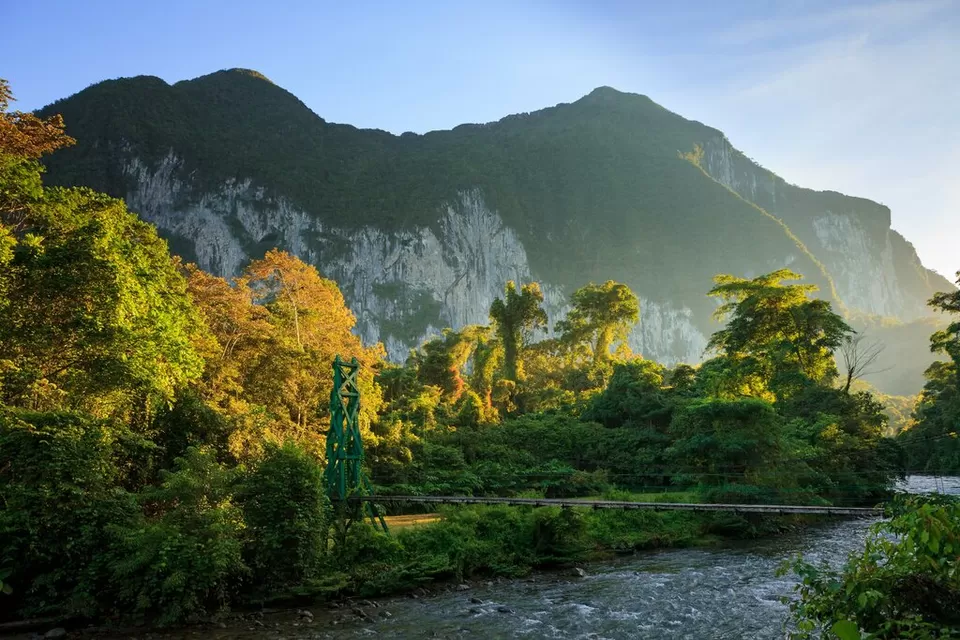
The pinnacles can only be reached by a strenuous and demanding trek that takes 3 days and 2 nights, and that requires a high level of fitness and endurance. The trek starts from the park headquarters, and follows the Headhunter’s Trail, a historic route that was used by the local tribes for headhunting raids. The trek passes through the rainforest, the river, the swamp, and the limestone, and ends at Camp 5, where you can rest and prepare for the final ascent.
The ascent to the pinnacles starts early in the morning, and takes about 4 to 5 hours, depending on the weather and the pace. The ascent involves climbing up and down steep and slippery slopes, ladders, and ropes, and reaching the viewpoint, where you can admire the breathtaking scenery and the pinnacles.
The descent to Camp 5 takes about 3 to 4 hours, and follows the same route as the ascent. The next day, you can return to the park headquarters by boat, or continue the trek to Limbang, another town in Sarawak.
To do the pinnacles trek, you need to join a guided tour that departs from the park headquarters. The tours are available on request, and they cost around RM 500 to RM 800 (USD 125 to USD 200) per person, per trek, depending on the trek and the season. The tours include the entrance fee, the guide fee, the transportation fee, the accommodation fee, and the food and water fee. You can book the tours at the park headquarters or through a travel agent.
The advantage of doing the pinnacles trek is that it is adventurous, rewarding, and memorable. You can experience the adventure and the challenge of trekking and climbing in the park, while being surrounded by the stunning scenery and the wildlife. The disadvantage of doing the pinnacles trek is that it is difficult, dangerous, and expensive. You may have to face the physical and mental strain, the weather and the terrain hazards, and the high cost and the limited availability of the trek.
What to Pack and Prepare for Gunung Mulu National Park
Gunung Mulu National Park is a place where you need to pack and prepare well, as it has a tropical climate, a rugged terrain, and a remote location. You need to bring the essential items and equipment that will make your trip comfortable, safe, and enjoyable.
Here are some of the items and equipment that you need to pack and bring for your trip to Gunung Mulu National Park, and why you need them.
Clothing:
You need to bring clothing that is suitable for the hot and humid weather, the cold and wet conditions, and the insects and leeches. You need to bring lightweight and breathable fabrics, such as cotton, linen, or synthetic materials, that can dry quickly and keep you cool. You also need to bring warm and waterproof layers, such as fleece, wool, or raincoat, that can protect you from the rain and the wind. You also need to bring long sleeves and pants, socks and shoes, hats and sunglasses, and insect repellent and leech socks, that can prevent you from getting bitten and scratched.
Footwear:
You need to bring footwear that is comfortable, durable, and supportive, as you will be walking and hiking a lot in the park. You need to bring hiking boots or shoes, that have good grip and traction, that can handle the rough and slippery surfaces, and that can protect your feet and ankles from injuries and blisters. You also need to bring sandals or flip-flops, that are easy to wear and remove, that can be used for swimming and relaxing, and that can let your feet breathe and dry.
Accessories:
You need to bring accessories that are useful, practical, and multifunctional, as they will help you with various tasks and situations in the park. You need to bring a backpack or a duffel bag, that is spacious and sturdy, that can fit all your items and equipment, and that can be carried easily and comfortably. You also need to bring a water bottle or a hydration pack, that is refillable and leak-proof, that can keep you hydrated and healthy, and that can reduce your plastic waste. You also need to bring a flashlight or a headlamp, that is bright and reliable, that can help you see and navigate in the dark, and that can also be used as a signal or a emergency device.
Gadgets:
You need to bring gadgets that are essential, convenient, and entertaining, as they will enhance your experience and your enjoyment in the park. You need to bring a camera or a smartphone, that is high-quality and waterproof, that can capture and store your memories and your moments, and that can also be used as a communication or a navigation device. You also need to bring a power bank or a solar charger, that is portable and powerful, that can charge and extend the battery life of your gadgets, and that can also be used as a backup or a emergency device. You also need to bring a speaker or a headphone, that is wireless and waterproof, that can play and listen to your music and your podcasts, and that can also be used as a noise-canceling or a relaxation device.
How Much Does It Cost to Visit Gunung Mulu National Park
Gunung Mulu National Park is a place where you need to budget and plan well, as it has a high cost of living, a limited availability of resources, and a variable demand of services. You need to pay and account for different expenses and fees that will affect your trip and your experience.
Here are some of the expenses and fees that you need to pay and budget for your trip to Gunung Mulu National Park, and how much they cost.
Transportation:
You need to pay for the transportation that will take you to and from the park, and that will also take you around the park. You need to pay for the flights, the boats, the buses, the cars, or the 4WDs, depending on your choice and your option. The cost of the transportation varies depending on the season, the demand, and the availability, but you can expect to pay around RM 200 to RM 800 (USD 50 to USD 200) per person, per trip, for the round-trip transportation to and from the park, and around RM 20 to RM 40 (USD 5 to USD 10) per person, per day, for the transportation around the park.
Accommodation:
You need to pay for the accommodation that will provide you with a place to stay and to rest in and around the park. You need to pay for the resort, the park accommodation, the homestay, the lodge, or the campsite, depending on your preference and your option. The cost of the accommodation varies depending on the season, the demand, and the availability, but you can expect to pay around RM 15 to RM 1200 (USD 4 to USD 300) per night, per person, for the accommodation in and around the park.
Park Entry:
You need to pay for the park entry that will grant you access and permission to enter and to explore the park. You need to pay for the park permit, the conservation fee, and the camera fee, depending on your duration and your purpose. The cost of the park entry is fixed and mandatory, and you can expect to pay RM 30 (USD 7.5) per person, per visit, for the park permit, RM 15 (USD 4) per person, per day, for the conservation fee, and RM 5 (USD 1.25) per camera, per day, for the camera fee.
Guides:
You need to pay for the guides that will accompany and assist you with the attractions and activities in the park. You need to pay for the guides that are assigned and approved by the park authorities, and that are included and arranged by the tour operators. The cost of the guides varies depending on the attraction and the activity, but you can expect to pay around RM 10 to RM 300 (USD 2.5 to USD 75) per person, per guide, for the guides in the park.
Activities:
You need to pay for the activities that will allow you to see and do the attractions and the highlights in the park. You need to pay for the tickets, the tours, and the packages, depending on your choice and your option. The cost of the activities varies depending on the season, the demand, and the availability, but you can expect to pay around RM 20 to RM 800 (USD 5 to USD 200) per person, per activity, for the activities in the park.
When to Visit Gunung Mulu National Park
Gunung Mulu National Park is a place where you need to consider and decide well, as it has different seasons and weather conditions that affect the park and the visitors. You need to choose and select the best time and duration to visit and to enjoy the park.
Here are some of the seasons and weather conditions that affect Gunung Mulu National Park, and how they affect the park and the visitors.
Dry Season:
The dry season in Gunung Mulu National Park is from June to September, and it is the best time to visit the park, as it has the least rain, the most sun, and the most visibility. The dry season is ideal for those who want to have the best weather, the best views, and the best experience in the park, as it offers the most comfort, the most convenience, and the most accessibility. The disadvantage of visiting the park in the dry season is that it is the most crowded, the most expensive, and the most booked, as it is the peak season and the high season in the park. You may have to deal with the crowds, the prices, and the availability of the park’s services and facilities.
Wet Season:
The wet season in Gunung Mulu National Park is from October to May, and it is the worst time to visit the park, as it has the most rain, the least sun, and the least visibility. The wet season is not ideal for those who want to have the best weather, the best views, and the best experience in the park, as it offers the least comfort, the least convenience, and the least accessibility. The advantage of visiting the park in the wet season is that it is the least crowded, the least expensive, and the least booked, as it is the off season and the low season in the park. You may have to enjoy the solitude, the savings, and the availability of the park’s services and facilities.
Transition Season:
The transition season in Gunung Mulu National Park is from April to May and from September to October, and it is the moderate time to visit the park, as it has a mix of rain and sun, and a mix of visibility and cloudiness. The transition season is a good option for those who want to have a balance of weather, views, and experience in the park, as it offers a balance of comfort, convenience, and accessibility. The transition season is also a good option for those who want to avoid the extremes of the dry season and the wet season, as it offers a balance of crowd, price, and booking of the park’s services and facilities.
Gunung Mulu National Park is a place that you should visit at least once in your lifetime, as it is one of the most amazing and unique places on earth. The park has something for everyone, whether you are a nature lover, a thrill seeker, or a culture enthusiast.
Gunung Mulu National Park is a place that you should visit at least once in your lifetime, as it is one of the most amazing and unique places on earth. The park has something for everyone, whether you are a nature lover, a thrill seeker, or a culture enthusiast. The park has something for every taste, whether you want to explore the caves, observe the wildlife, walk on the canopy, or climb the pinnacles.
In this guide, you have learned everything you need to know about visiting Gunung Mulu National Park, including how to get there, where to stay, what to see and do, what to pack and prepare, how much it costs, and when to visit. Whether you are planning a short trip or a long adventure, you will find this guide useful and helpful.
We hope that you have enjoyed reading this guide, and that you have found it informative and engaging. We also hope that you have been inspired and motivated to visit Gunung Mulu National Park, and to experience its secrets and wonders for yourself.
Thank you for your time and attention, and we invite you to share your feedback and comments with us. We would love to hear from you, and to know more about your thoughts and opinions on Gunung Mulu National Park.
Have a great day, and happy travels!

